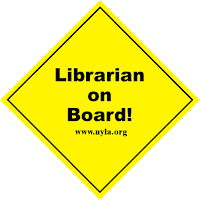I have just completed writing a 20-page funding proposal for $300,000 to research media in the Pacific. It is a significant investment in time and resources with no guarantee that you will see a cent of the funds. In fact, most research money is very competitive and there many successful writers out there trying to access multiple pools of money. So what is the secret to producing compelling grant or research proposals.
Here are 8 tips for writing strong funding proposal:
Here are 8 tips for writing strong funding proposal:
- The Cover Letter
- The cover letter has to make a strong impression—as it’s the funding agency’s introduction to your organization. You’ll need to clearly state your group’s mission and exactly what you’re asking for—and how you plan to use it. Be sure that your proposal is in line with the funder’s goals—and demonstrate clearly, succinctly and compellingly that you are a clear fit for their funding objectives.
- The Executive Summary
- The executive summary presents your case as a summary introduction to the grant proposal itself. If you don’t grab the reader’s attention from the first paragraph, the rest of your proposal may not get read.
- The Statement of Need
- A statement of need is sometimes referred to as a problem statement, and that’s exactly what you’re doing—stating the problem that your program hopes to solve. In your statement of need, you’ll need to demonstrate why your organization is the right one to address the problem—including data and background research as well as anecdotal evidence that demonstrates the issue.
- The Objective Statement
- The section outlining your goals and objectives should be especially compelling for you to have a chance at receiving anytype of grant funding. Outline clearly the results you hope to see—and be sure they’re measurable. Use clear language and quantifiable terms. And be sure to demonstrate exactly how your program’s objectives will help your target population. Be sure all your objectives relate to your statement of need.
- The Program Design
- This section of your proposal will tell readers exactly how you plan to accomplish the goals you set forth in the previous statement. This is the program you are trying to fund—so you’ll need to demonstrate that your organization has a clear plan with a strong chance of success. You’ll need to address any possible objections the reader might have by clearly demonstrating why your methodology is the best way to achieve your stated goals. You’ll also need to include all the resources you’ll need—including equipment, supplies, and people.
- The Evaluation Section
- When a funder chooses to subsidise your project, they want to know how they—and you—will discern whether the project succeeded. The evaluation section is where you show how you’ll determine whether the project achieved its goals. It’s important to demonstrate that your project’s results can be measured objectively—so that, in turn, the funding agency will know what impact its contribution has made. Explain your record-keeping process, your plan for data collection, and other methods for assessing your project’s effects.
- Sustainability
- Funders want to fund projects that are sustainable—and can continue without their help. You’ll have to show how you plan to raise money to keep the project going after the funder’s grant money has been used. You’ll need to show a specific plan for raising money that’s doable for your organization.
- Budget
- You’ll need to include exactly what you plan to spend the money on—including people, equipment, and any other resources. You’ll need to be detailed to prove your competence. Be sure to include any materials asked for by the funder, including financial statements.






